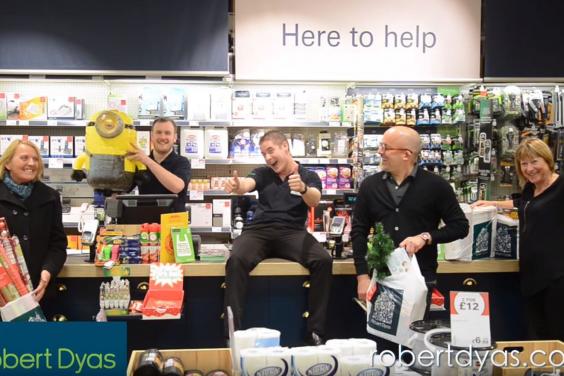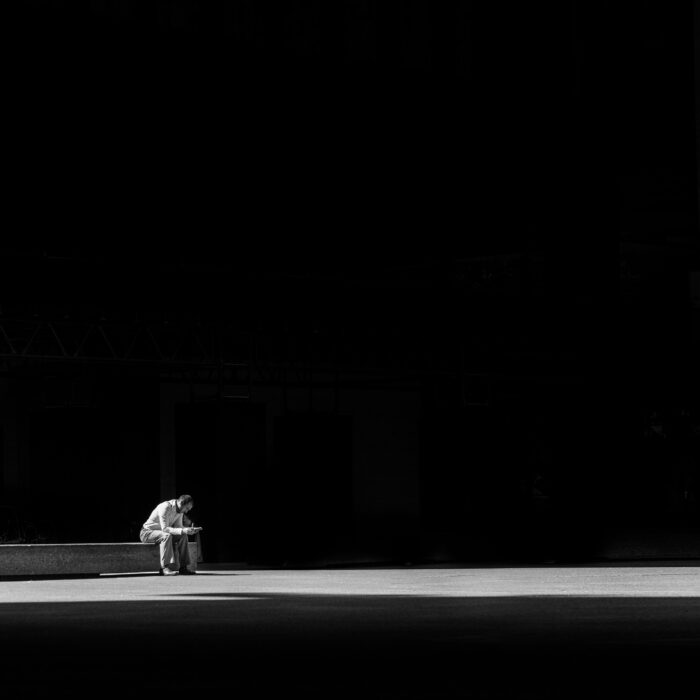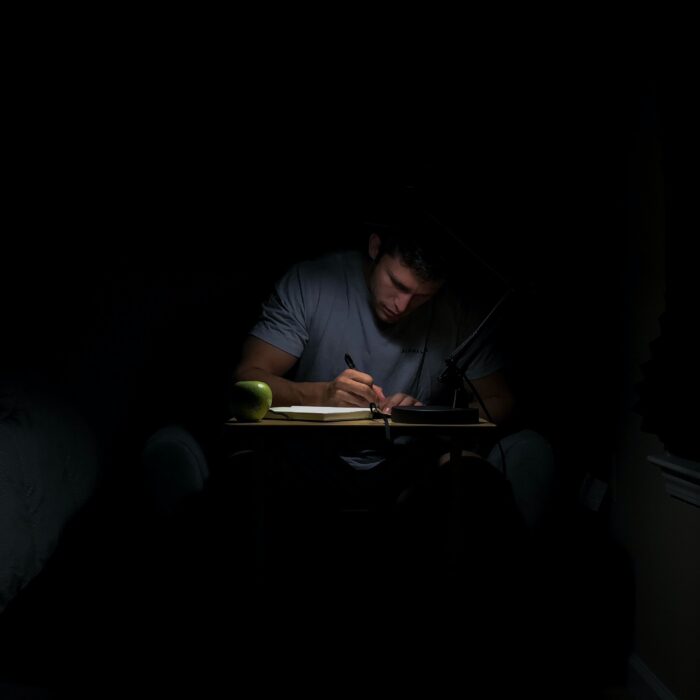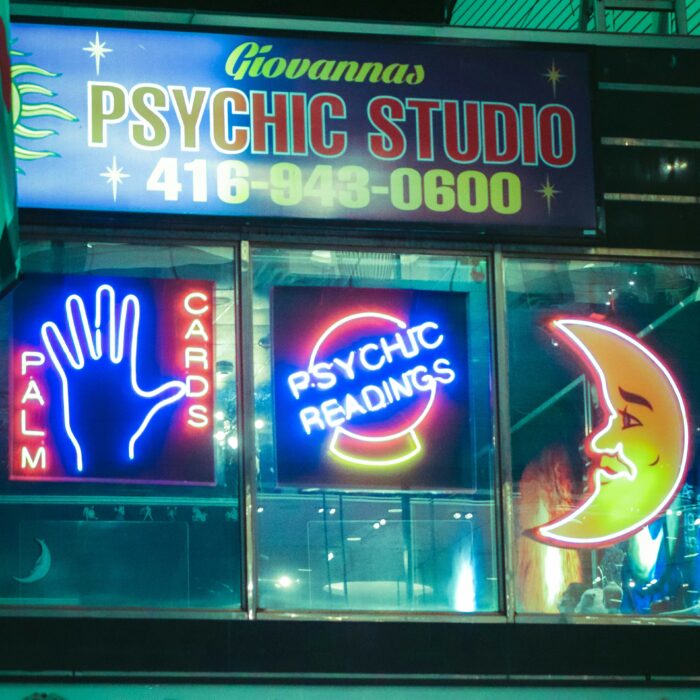You have no items in your cart. Want to get some nice things?
Go shopping
Civil partnerships are ten years old in the UK. With something resembling equality in marriage a decade ago, commentators speculated on the LBGT community finally receiving acceptance and parity, the same people no doubt who raised the subject again when gay marriage was finally legalised here in 2014. However, I have a different benchmark for tolerance. It comes from a somewhat surprising source; the Robert Dyas DIY chain’s Facebook page.
I am of course referring to the weird Robert Dyas Christmas advert last year. You may have seen this clip from YouTube making the rounds; I had a friend link it to me. At first I thought it was a joke and I’m sure I’m not alone. The video consisted of straight and gay employees and shoppers commenting on why Robert Dyas is a good place to shop. It appears to be genuine and is something to be seen. The press response has been more or less critical, though I put this down to their advert’s awkward austerity, rather than its starring roles. While most people are happy to laugh at such a ridiculous advert, I would say that there is a positive glimmer from it about our culture. Even if it comes from a source which usually reflects badly on us; marketing. Looking beyond the mere content of the advertisement we should consider what it heralds for the LGBT community. By being pandered to by desperate marketers I would say that people of romantic minorities have truly achieved visibility and equality. Straight money is finally just as good as gay money.
Of course, this low budget Christmas advert is not the first to feature people and couples on the LGBT spectrum. Prior to this, in 2013 Amazon had a famously gay-inclusive advert for their Kindle e-reader featuring a gay and a straight couple on holiday. Their example was followed by Allstate Insurance and Honey Maid for Graham crackers in 2014. Campbell’s soup courted ‘controversy’ and won brownie points with their rebuttal to a woman who took to social media to complain about their ad starring a same-sex couple and their child. These may seem promising and I’ll admit that it is a start, however the sad truth of these adverts is that most of them will not be broadcast on television. Instead they are merely showcased safely out of the way online. For most instances you have to hunt down the examples and they will not yet have made their debut on British screens.
But the intention is there. I feel the measure of a society is how its businesses appeal to consumers and portray their produce. Some of you may disagree with me or feel that it is a depressingly modern acid test, but it is difficult to deny that these short clips aren’t a mini-representation of current society and culture. Brands and modern corporations are highly image driven, to the point where their media is heavily scrutinised both inside and outside of the company. That same-sex, racial minority and mixed race couples can grace your screens between Channel 4 dramas and before the film starts at the Odeon shows that large chains (who are concerned with how we see their product) feel that minority couples can be associated with their brand or product without damaging its image. From this we can assume two things; first that LGBT couples are acceptable to the public. Second that there are enough visible minority couples around that it’s worth advertising to us. The tipping point has occurred where the majority of people in society have a positive image of the LGBT spectrum and the change in adverts signifies this. I am far from celebrating consumerist brand-oriented culture, but it is a promising hallmark don’t you think?
In wider media, we still are still running behind though moving in the right direction. In the 20th century films and television programmes, if they had LGBT characters at all, were happy to showcase a chaste camp stereotype; the gay best friend in a Hawaiian shirt with flappy wrists ad nauseam. As ever, depictions of women were worse; if lesbian roles crop up we can expect the rabid feminist or the spandex clad supervillain’s sidekick. What wonderful role models. Nowadays beyond cardboard stereotypes there is a variance in gay, lesbian and trans characters to be had from shows like Orange is the New Black, Skins, True Blood and Glee. These are all from mainstream media as opposed to the cul-de-sac that is the Netflix ‘Gay and Lesbian’ genre. Sometimes the inclusion feels like tokenism but there’s no denying that the portrayals are shifting to become positive representations of gay men and women. If you want to see how far we’ve come, why not check out the dated Christmas classic of 2003, Love Actually, a film purported to be all about showcasing the different types of love. Do you see any gay couples there? Neither do I.
Perhaps the driving force behind this increased tolerance is not a moral one but an economic choice.
Same-sex couples are less likely to have costly children which give them an increased disposable income. White lesbians outearn their straight, male, PoC counterparts. For one reasons or another, gay households are at an economic advantage. This concept is in economist circles known as the ‘Pink Pound’ (or dollar if you’re across the pond) and refers to the purchasing power of members of the LGBT community, seen as a largely untapped resource the commercial world. Make no mistake, these companies want your money and in order to get it they must stop ignoring you. Though now we are being pandered to, it was better than being ignored outright, right? If politicians and businessmen appeal to the pink pound then it’s a sure sign that we are leaving our fringe status behind and are being accepted by mainstream society.
Whatever the reason for this increased visibility I salute it. Shaking hands with the corporate world may seem slippery and unpleasant, especially from businesses which in the not too recent past were happy to keep us down. However, I am optimistic; this mass appeal to gay wallets is a positive trend in society, representing shifts in cultural permissiveness outside the romantic norm, even if some of these gestures can seem heavy-handed and bizarre. So perhaps you’ll meditate upon that the next time you need to purchase a drill or plastic Christmas tree both of which, as Robert Dyas’ employees point out, are suitable for gay or straight people.

About George Aitch
George is writer from Blackheath. He has written for The Guardian, Litro and The British Journal of Psychiatry. You may find his work in print and online in places such as Storgy, Bunbury Magazine and The Crazy Oik among others. His essay ‘What Do You Do When It All Goes Wrong’ was recently shortlisted by Ascona.




One comment